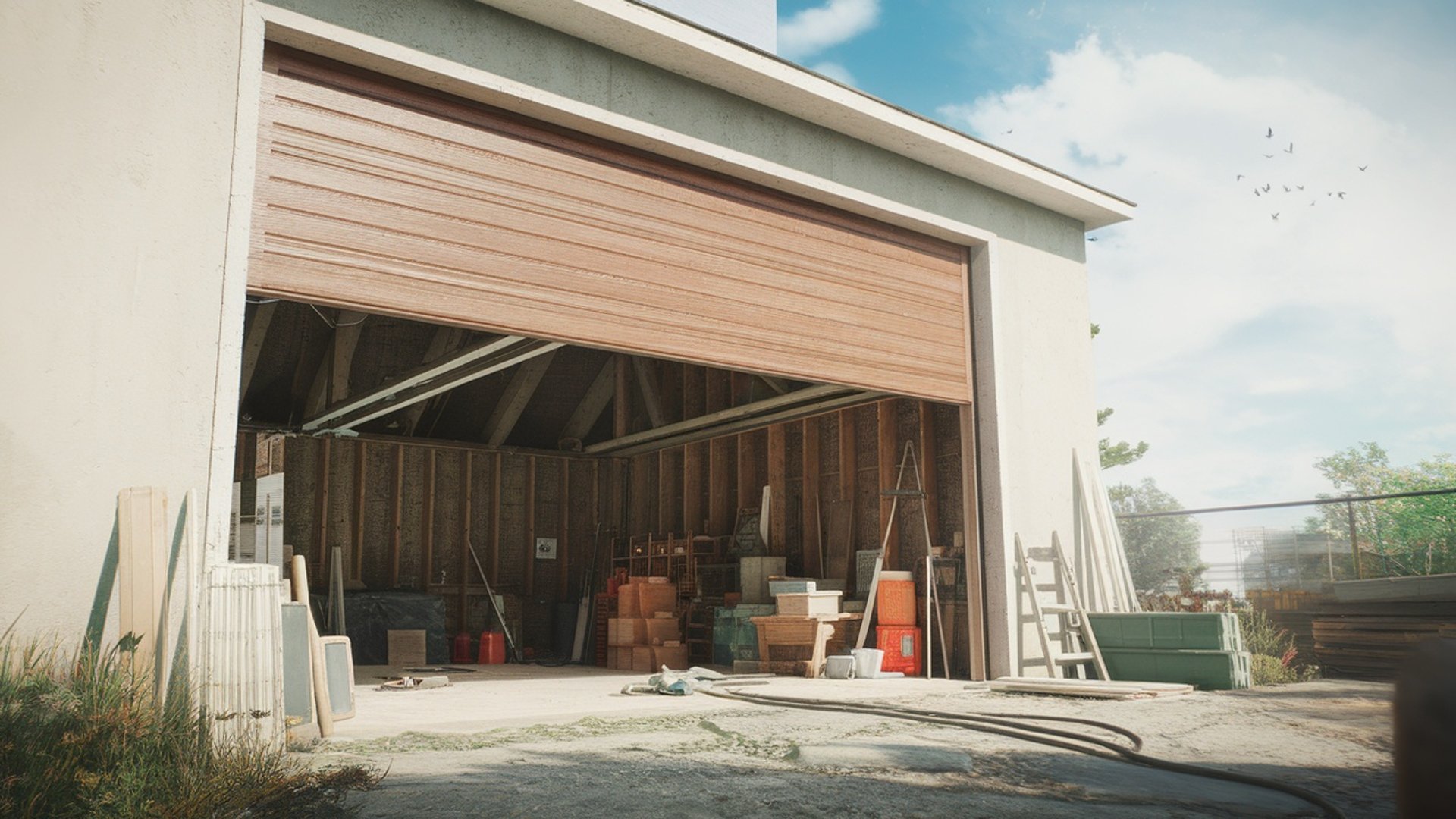How to Build a Garage Yourself: A Step-by-Step Guide
Building your own garage can be a rewarding and cost-effective project.
HOMETRENDING
12/14/20245 min read



Introduction
Building your own garage can be a rewarding and cost-effective project. Not only will you gain a functional space to store your car, tools, and other belongings, but you'll also improve the value of your property. However, before diving into this project, it’s essential to understand the planning, time, and effort involved.
In this comprehensive guide, we’ll walk you through the step-by-step process of building a garage yourself. From gathering the right materials to the final touches, we’ll cover everything you need to know. Plus, we’ll answer common questions and provide helpful tips to ensure your DIY garage project is a success.
Whether you're an experienced DIYer or a beginner, this guide will provide you with the knowledge to build a durable, functional, and attractive garage. Ready to get started? Let’s go!
1. Planning Your Garage Build
The first step in any construction project is planning. A garage isn’t a one-size-fits-all project. Your garage's design should reflect your needs, available space, and local building codes. Here are the key factors to consider when planning your garage:
1.1. Determine the Size and Purpose
Single or Double Garage: Consider how many cars you plan to store. A single garage typically measures around 12x20 feet, while a double garage can range from 20x20 feet to 24x30 feet.
Additional Storage: If you plan to use the garage for more than just parking—like for a workshop, storage space, or a home gym—you may need to adjust the size to accommodate additional equipment or shelving.
Future Expansion: Think about whether you might want to expand your garage in the future. Designing with expansion in mind can save time and money later.
1.2. Zoning and Permits Before starting construction, it’s crucial to check with your local government to determine if you need any zoning permits or approval for building a garage. Different cities and counties have different requirements, and neglecting this step could lead to costly fines or delays. Make sure to obtain the necessary permits before beginning your project.
1.3. Budgeting Establishing a realistic budget is essential to avoid financial surprises. Building a garage involves expenses for materials, tools, labor (if you're hiring help), and permits. A rough breakdown of costs includes:
Foundation Materials: Concrete, rebar, gravel, etc.
Framing: Wood, nails, screws, or metal framing materials.
Roofing: Asphalt shingles or metal roofing sheets.
Doors and Windows: Garage doors, side doors, and windows.
Miscellaneous: Electrical wiring, insulation, and finishing materials.
2. Gathering Tools and Materials
Once you’ve planned out the design and budget for your garage, it’s time to gather the necessary tools and materials. Here's a list of common tools you’ll need:
Basic Tools: Hammer, measuring tape, level, utility knife, screwdrivers, pliers, and saws.
Power Tools: Power drill, circular saw, and jigsaw.
Heavy-Duty Equipment: Concrete mixer (if mixing your own concrete), wheelbarrow, and scaffolding (if building a second story or doing extensive work).
Materials: Concrete for the foundation, lumber for framing, shingles for roofing, insulation, drywall (if finishing the interior), and garage doors.
Safety Equipment: Gloves, safety goggles, dust mask, and ear protection.
3. Building the Foundation
A strong foundation is crucial to the stability and longevity of your garage. There are two primary types of foundations for garages: slab-on-grade (a concrete slab foundation) and pier and beam. The most common choice is a slab foundation.
3.1. Preparing the Site
Clear the area: Remove any debris, rocks, or vegetation where you plan to build your garage.
Level the ground: Ensure that the area is level to avoid complications with drainage or structural integrity.
Excavation: Dig the area to the correct depth for your concrete slab or foundation.
3.2. Pouring the Concrete Slab
Set the Forms: Use wooden boards to form a mold for the concrete slab. This will keep the concrete in place as it hardens.
Rebar: Place rebar or wire mesh inside the forms to reinforce the concrete and prevent cracking.
Pour the Concrete: Once the rebar is in place, pour the concrete into the forms. Use a shovel or rake to spread the concrete evenly.
Smooth and Level: Use a screed to level the concrete, and a trowel to smooth the surface. Allow the slab to cure for at least 24-48 hours before moving on to the next phase.
4. Framing the Garage Structure
With the foundation in place, it’s time to begin framing the garage. This step involves constructing the skeleton of the garage, including the walls, roof, and door frames.
4.1. Building the Walls
Vertical Studs: Place vertical studs at regular intervals (usually 16-24 inches apart) and secure them to the foundation.
Top and Bottom Plates: The top and bottom plates are horizontal beams that connect the studs. Secure the bottom plate to the concrete slab using anchor bolts.
Door Frames: Frame openings for the garage door(s) and any side doors or windows.
4.2. Constructing the Roof
Rafters or Trusses: The roof structure can be built using rafters or prefabricated trusses, depending on your design and budget.
Securing the Roof: Install the rafters or trusses to the top plates of the walls, ensuring they are spaced correctly for proper weight distribution.
Roof Sheathing: Once the rafters or trusses are in place, cover them with plywood or OSB (oriented strand board) sheathing.
5. Installing Doors, Windows, and Roofing
After the framing is done, it’s time to install the exterior elements like the garage door, windows, and roof.
5.1. Garage Door
Prepare the Opening: Ensure that the opening for the garage door is level and wide enough for your chosen door type.
Install the Tracks: Mount the garage door tracks securely to the frame, ensuring that they are aligned.
Attach the Door: Follow the manufacturer’s instructions to hang the door, attach the springs, and ensure it operates smoothly.
5.2. Roofing
Install Underlayment: Lay down a waterproof membrane or underlayment to protect your garage from water damage.
Shingles or Metal Roof: Depending on your preference, install asphalt shingles or metal roofing sheets to complete the roof. Be sure to overlap the materials to ensure proper drainage.
5.3. Windows and Side Doors
Install the windows and any side doors to provide ventilation and accessibility to the garage. Use flashing and caulking to seal the edges to prevent water infiltration.
6. Finishing Touches: Insulation and Electrical Work
To make your garage comfortable and functional, consider adding insulation, electrical wiring, and interior finishes.
6.1. Insulation
Insulate the walls and ceiling of your garage with fiberglass or foam board insulation. This will help regulate the temperature, making your garage more comfortable for use as a workspace or storage area.
Don’t forget to insulate around doors and windows to improve energy efficiency.
6.2. Electrical Work
If you plan to use your garage for anything beyond parking cars (such as a workshop), you'll need electricity. Install electrical wiring for outlets, lighting, and any specialized equipment.
Make sure to follow local building codes and hire a licensed electrician if you’re unsure about handling electrical work safely.
7. Common Questions and Answers
Q: How long does it take to build a garage?
The time it takes to build a garage depends on several factors, including the size of the structure, your experience, and the materials used. On average, a DIY garage build could take anywhere from a few weeks to a couple of months, depending on the complexity of the project and your availability.
Q: Do I need a permit to build a garage?
Yes, most cities and counties require permits for building a garage. It's essential to check with your local government to ensure you comply with all zoning regulations, building codes, and safety standards before beginning construction.
Q: Can I build a garage on my own?
Yes, if you have basic carpentry skills and are comfortable working with power tools, you can build a garage yourself. However, larger projects or tasks like electrical work may require professional help.
Conclusion
Building your own garage is a challenging but rewarding DIY project. With the right planning, tools, and materials, you can create a functional, high-quality garage that meets your needs. From laying the foundation to framing the structure, installing doors and windows, and finishing the interior, each step is crucial to ensuring your garage will stand the test of time.
By following this guide, you’ll have the confidence to take on your own garage-building project. Remember to stay organized, take your time, and most importantly, stay safe throughout the process. Happy building, and don’t forget to check back on G’s MCT Blog for more DIY tips and home improvement ideas!
